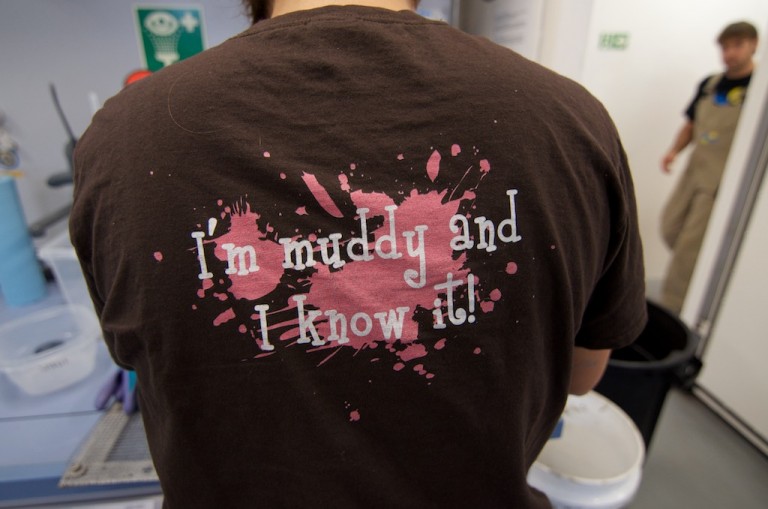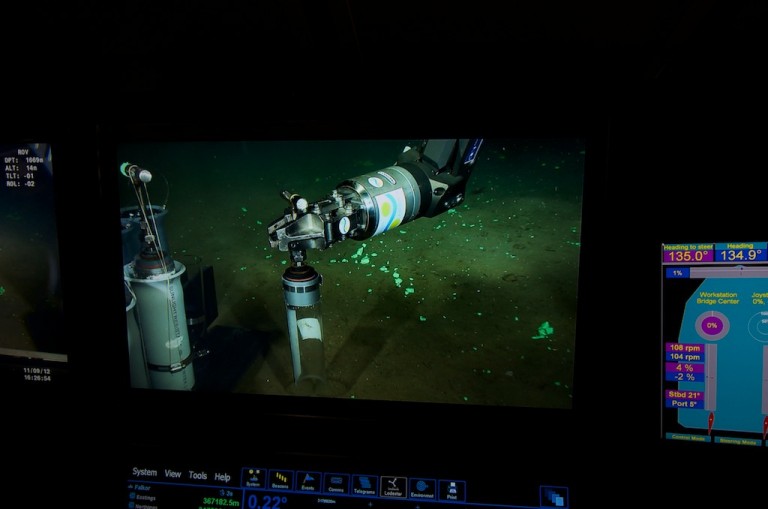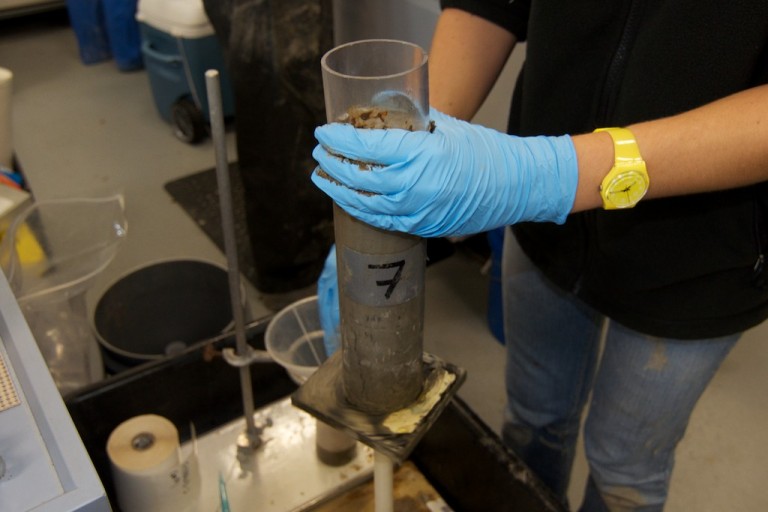Oozing samples of seafloor sediments from multicore casts and ROV push cores are brought into the wet lab for processing. The scientists working on these samples get quite muddy in the process, but have a great sense of humor for their dirty work. While working on a recent push core sample, biological technician Jennie McClain Counts sported a customized t-shirt proclaiming her status as “Goddess of the Mud,” an apt description when you see her in the lab with mud-streaked pants and grimy gloves.

What does Jennie do with all of this mud? After cores have been offloaded from the multicore or ROV, Jennie carefully slices each one into four size fractions: surface to one centimeter, 1-3 cm, 3-5 cm, and 5-10 centimeters into the core. Animal life is typically constrained to this upper layer. She then puts each of these slices into labeled bottles with preservative and stores them while at sea.
After the cruise, the Jennie will take the samples back to the lab at the USGS Southeast Ecological Science Center where she works for benthic ecologist Amanda Demopoulos who is collaborating with ECOGIG researchers on this project. The samples will be sieved with fine mesh screens to sort out the different species of animals. Scientists in the lab will identify and count each species. They also will use specialized tools—such as delicate brushes made of human eyelashes—to extract the tiny meiofauna, organisms between 45 µm and 300 µm in size.

What marine organisms live in this muddy habitat? Jennie expects that polychaete worms will be the dominant species in the samples. She also expects to see some copepods, amphipods, gastropods (snails), and bivalves. This research is investigating important questions about the community structure (who lives there?) and dynamics (what abundance of each type?). In this study, they will compare the samples from natural seeps, non-seeps, and oil-spill-impacted sites to characterize the benthic communities in these different habitats here in the northern Gulf of Mexico.
Other researchers onboard are also processing cores from the same locations to add important geochemical background information for this study. For example, sediment particle size is an important factor in determining suitable habitat for different types of animals. The researchers might expect to see fewer animals in fine-grained clay vs. more animals in porous sandy sediment where nutrients and wastes are more readily circulated.

Back at sea, the R/V Falkor has transited to an area of known natural seeps, about 380 kilometers southwest of Pascagoula. Increasing winds and rough seas suspended our sampling efforts for the day. Before dinner, microbiologist Beth Orcutt presented the second “Science at Sea” seminar describing her research interests and work with the ECOGIG benthic landers.
Rough weather forecasts have the science team developing contingency plans each day. But the mud-loving scientists are optimistic that the weather will calm enough so that they can collect sediment samples at this natural seep site.
